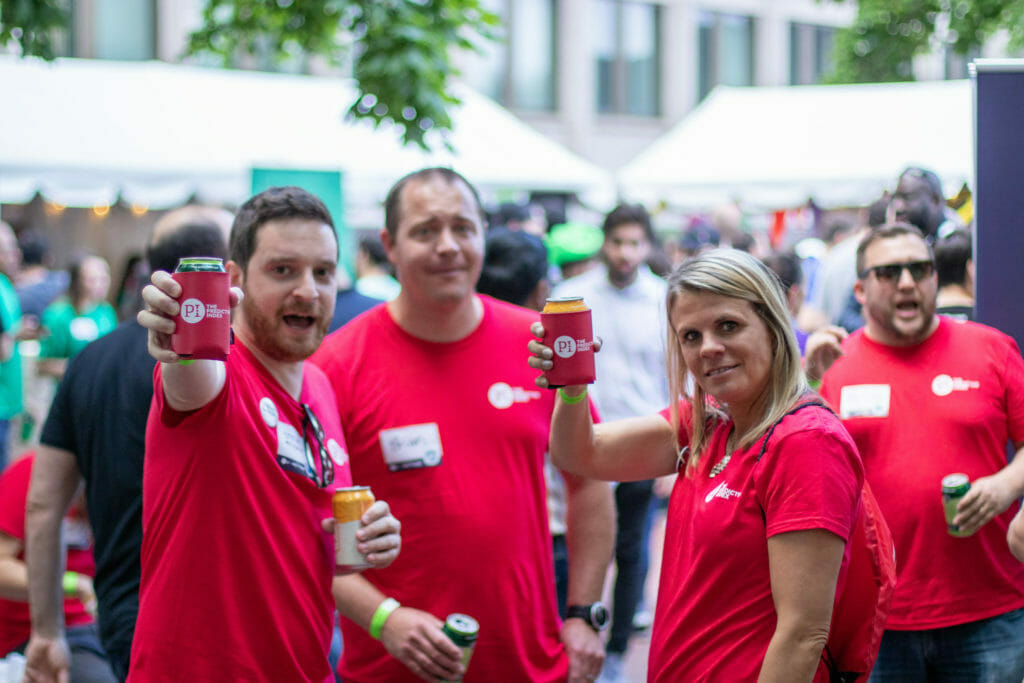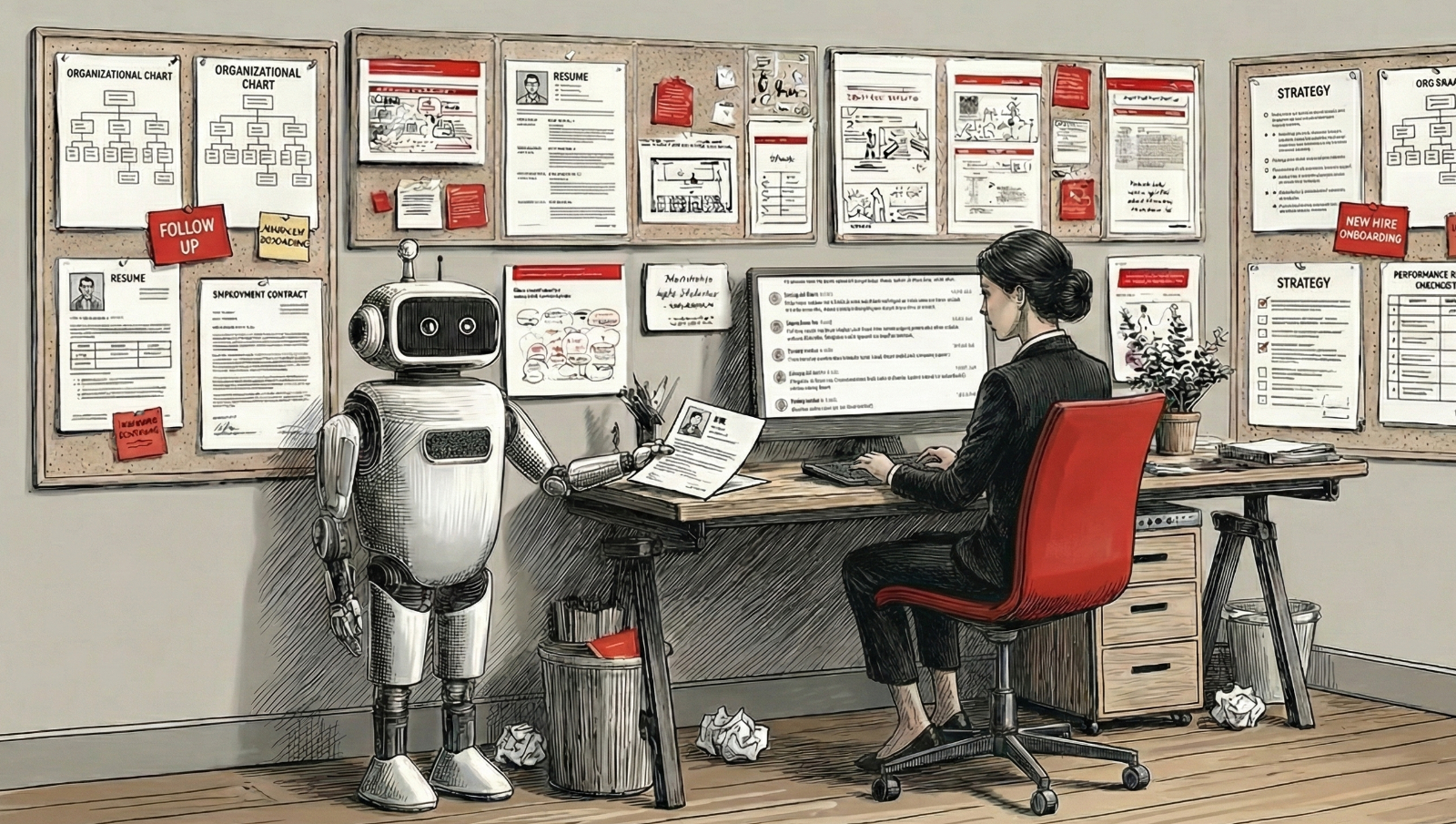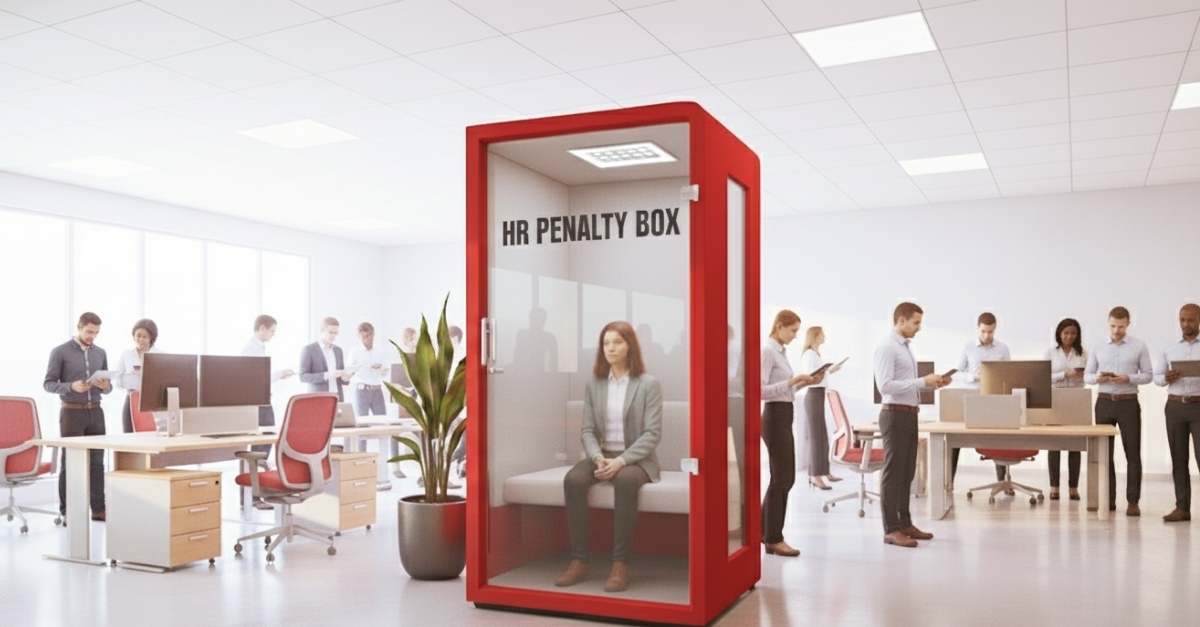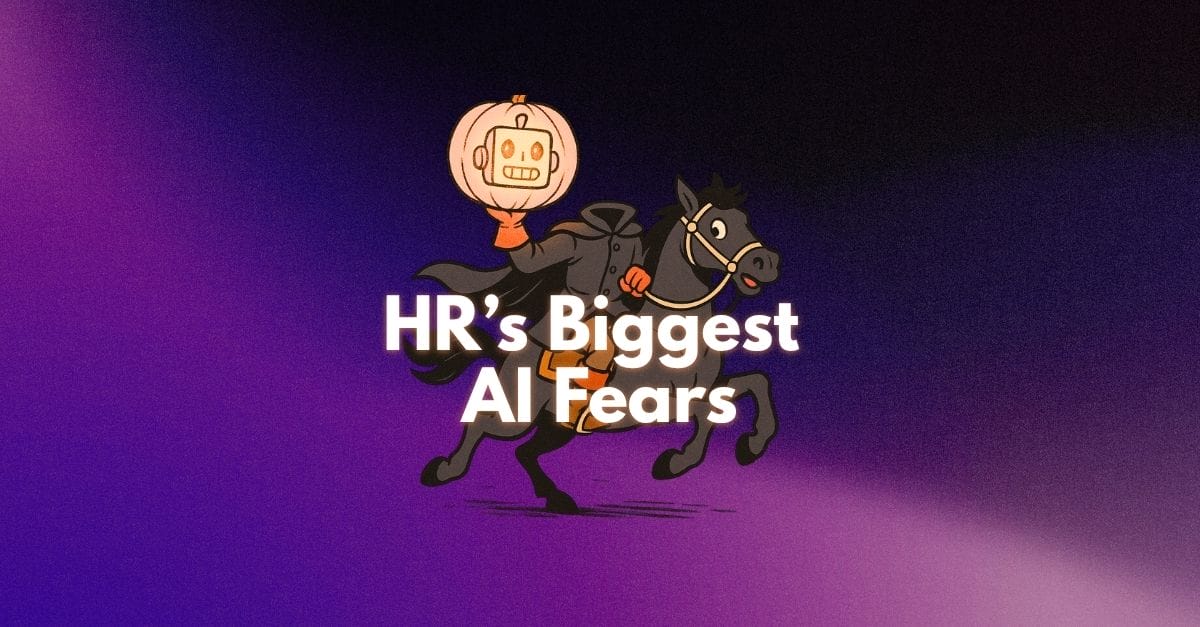What will motivate your employees? It’s not a question with just one simple answer. For some, it may mean having a strong social connection with coworkers. Others may want work that does some kind of measurable good, represented by results that tie directly to company goals. And there may be a significant faction that just wants something tangible, like free food.
Regardless, most people can recognize a highly motivated workplace when they see one. Employees will be more engaged, productive, and collaborative. Work will get done faster and, very likely, will showcase a higher degree of creativity. Studies repeatedly support this. Some even report that high employee morale can lead to up to 21 percent higher profitability.
So while it may be hard to say what, exactly, motivates your employees, it’s still a question worth asking. Let’s explore some of the different ways you can answer it.
Join 10,000 companies solving the most complex people problems with PI.
How do we define employee morale?
Employee morale is an umbrella term that refers to the general feelings and attitudes of workers at an organization. It may be used to describe how satisfied employees are with their work, their level of happiness or motivation, or their enthusiasm or engagement, among other traits.
Because it is closely linked with higher levels of productivity, retention, and other positive workplace goals, measuring and assessing employee morale is a key way to determine the likelihood of success at work. Likewise, knowing strategies for motivating employees and maintaining high morale during difficult times are key skills for team leaders to cultivate.
What makes employee morale crucial in a workplace?
High employee morale has continuously been linked to organizational success. Put simply, that’s because a workplace environment that’s positive and engaging will produce employees who will want to do good work. Here are some other ways strong morale can benefit a company:
- Increased retention: When employees are happy, they won’t want to leave their job. The result will be a greater number of long-term employees, which will mean more experience and greater institutional knowledge. It will also mean lower recruitment costs.
- More collaboration: If employees enjoy working together, they’ll be more likely to keep working together, as well as seek out other positive workplace relationships. This will lead to more shared ideas and, possibly, greater efficiency.
- Higher levels of innovation: When the workplace is positive and supportive, employees will feel more comfortable expressing ideas, taking risks, and making suggestions. They’ll feel more free to be themselves, which can help encourage new ways of thinking.
- Better mental health: High morale is typically the result of a workplace that’s focused on support, encouragement, and employee growth. All this can help reduce stress and lead to better mental health.
- Reduced conflict: If employees actually want to work together, and it’s easy for them to do so, then they’ll be much less likely to engage in negative behavior. They’ll be too focused on getting work done to get into fights or distract each other with politics.
- Lower costs: A supportive and positive work environment will mean more work gets done more efficiently. It will also mean employees show up more often and stick around longer, which just might lead to higher quality work. All this is why high morale is often linked to reduced costs.

Best practices to uplift team morale
Although lifting team morale isn’t something you can likely do in a day, there are plenty of strategies for making sure a workplace remains positive and supportive over the long-term. Not only will the following best practices help make employees happier, but many of them are also great ways to improve productivity, efficiency, and collaboration in general.
Open communication
How safe and comfortable workers are with communicating with one another plays a central role in team morale. That’s because an office with an open dialogue is a place where strong relationships form. People are sharing information, both personal and professional, which enhances engagement and builds trust. And that helps make for a better workplace.
So how do you create a culture of open communication? A good place to begin would be to establish some guidelines. Outline a few rules for how workers should talk to one another, share information, and respect each other throughout. Be sure to address particularly sensitive conversations, such as how to give and receive criticism, or how to handle a disagreement. You could also create processes for handling conflicts when they arise. If you can, try to make all this a collaborative process, both to get everyone’s buy-in and to demonstrate a commitment to open dialogue.
Clear company vision
A clear goal to aim for is one of the best ways to boost morale. It aligns everyone’s goals, but also provides them with a sense of belonging by making them feel like part of something larger than themselves. It also inspires them to work harder and support each other, helping to increase staff connection and engagement.
When creating your company’s vision, try to make it as specific and easy to understand as possible. Focus it on the future and don’t be afraid to make it lofty and challenging, but not impossible. It should be something your company can achieve. And don’t forget to make it inspiring. You can do this by tying it to your company’s values and making it inclusive, unifying, and passionate. Then, once you’ve got it down, share it widely with workers by using tools like employee handbooks, placing it in regular communications, and making sure it is a part of the everyday decision-making process.
Recognition & rewards
An easy way to make morale better is to simply start calling out people for their good work. A little recognition can go a long way in this regard. And when you add in rewards, you can show how much you value your employees even more.
Giving recognition can be as simple or involved as you’d like it to be. Something as basic and direct as thanking an employee after a project can have a huge impact. You could take this a step further and make your praise public. Share someone’s positive contributions over a group email or during the next team meeting. Remember to keep a record of them as well, then cite them when you hand out bonuses or any other rewards. And, maybe most importantly, work to make praise, recognition, and appreciation a regular part of the work culture. This way, everyone will be aware of their worth.
Professional development
Giving employees the tools and support to learn new skills and grow their professional careers is a great way to keep them motivated. It shows that you not only care about the impact that they are making, but believe enough in them to invest in their future.
Be on the lookout for any continuous learning opportunities you can provide your employees. This could be access to industry conferences where they can listen or participate in panels, as well as network. Or it may be sponsorship for courses to earn a professional certification of some kind. You could even organize meet-ups within your company for employees to meet and learn from one another. If you aren’t sure what you workers want, consider sending out regular surveys to assess what they’re most interested in learning and developing.
Work-life balance
If you want employees to be excited about coming into work, then make sure they have a life outside of it too. A healthy work-life balance correlates directly with high morale because it shows you care about them as whole people. You want them to take the time to relax and decouple from their responsibilities, not only because it will keep them from getting burned out at work, but because it’s good for them.
There are many ways you can show that a good work-life balance is a priority. For instance, you could institute monthly or quarterly company holidays for employees to recharge. Or you could provide them with a gym membership. However, one of the most effective strategies may be establishing a hybrid workplace. By giving employees the option to work from home when they want, you’re giving them the flexibility to avoid time-consuming commutes, take care of their families, and manage their personal affairs. You’re also showing that you trust them to get their work done, which is always a good way to increase morale.
Team-building activities
All work and no play would make anyone dull. Even in the most collaborative and positive work environments, it can be exhausting to stay focused and engaged on the job all the time. And while individual time off may help employees avoid burnout, what can you do to ensure teams continue to work together effectively and efficiently. This is where team-building activities can help.
There is no shortage of potential activities to choose from. You could keep it simple by including some kind of ice breaker at the beginning of meetings, such as the always popular Two Truths and a Lie. Or you could organize a scavenger hunt in the office for different teams to compete against each other. If you feel like getting more ambitious, you could even arrange to have an activity off-site, such as a company picnic. Whatever you do, the point should be to cultivate employee relationships while doing something fun together. The bonds that form will carry over into everyday work.
Community engagement
If you’re looking for an activity to do together as a team that can bring benefits to both employees and the surrounding community, consider organizing a charitable event. Employees will be sure to appreciate the chance to help out the neighborhood. And it won’t hurt to work for a company that cares about doing good.
Community engagement initiatives are typically plentiful. You could give employees the opportunity to hand out meals at a homeless shelter, pick up trash in the streets or parks surrounding the office, or provide tutoring or training services to local youths. If you’re looking for remote options, you might consider virtual fundraising or other online volunteer activities. Regardless, it can be a good idea to reach out to your own employees to see what they’re most interested in. That way, they can be sure to find an activity that they find the most fulfilling – and morale-boosting – for them.
Competitive compensation
Don’t neglect the power of cash to help increase morale. While everyone likes earning more money, the real power of competitive compensation is in how well it shows your appreciation for your employees. There is no more tangible way to put your money where your mouth is.
Performance-based incentives, in particular, can be a great way to incentive employees and improve morale. These can be quarterly bonuses that reward consistent performance, or one-off rewards for work that is especially high-quality. Be sure to make the bonus significant enough to feel like an achievement, and always tie it closely to the specific work that the employee did to earn it. When you pair this with non-monetary recognition, such as regular public praise, you’ll start building a more appreciative, positive environment.
Encouraging creativity
The ability for employees to exercise their creativity in their job is an undervalued but effective strategy for improving morale. Creativity is closely tied to personal expression, which relates back to open communication. By allowing employees to showcase their full selves through their work, you are providing them with a powerful mode of inspiration.
Although creativity is subjective, there are plenty of ways to encourage it. Try to push managers to explore their employees interests so that they can assign them tasks that they’ll find engaging. Also make professional growth a priority at the company, and leave time for employees to pursue their own personal projects. If possible, try to leave some room at the beginning of assignments for responsibilities to be reallocated based on level of interests. This way, employees can try out different tasks, then only commit if they are invested.
Empowering decision making
Workplaces where employees can take part in the decision-making process often have high morale. That’s because the act of including employees in decisions, whether they are everyday or highly strategic, shows that their input matters. Plus, it gives them a more direct connection to the work.
If your organization is small, then you could promote inclusivity by inviting employees or a representative to sit in on decision-making meetings. Or you could poll employees to give them a chance to influence company direction. A suggestion box, whether physical or digital, can be a slightly less direct but more efficient way to get employees involved in the decision-making process. Just be sure to highlight when you take up their suggestions, as well as be able to justify when you decide to go in a different direction.

Proven strategies to evaluate team morale at aork
Part of prioritizing team morale is knowing how to check in with employees from time to time to make sure the measures you’ve put in place are still effective. After all, situations can change. Workloads can increase, priorities can shift, and proactive efforts to inspire and motivate employees may fall off. That’s why the following methods can be helpful for ensuring healthy long-term morale.
Surveys and questionnaires
If you’re interested in getting a quick, point-in-time measure of your organization’s morale, then you can’t do much better than a survey. Try to include questions that cover the most critical topics. For instance, could ask employees to rate their job fulfillment or contentment on a scale of 1 to 10, or ask them if they feel like they can communicate openly. Try to keep the survey short to encourage more participation, but always include a space for open employee suggestions at the end. And by keeping responses anonymous (as well as broadcasting this fact), you can ensure you’re getting honest feedback.
One-on-one meetings
Private, one-on-one meetings are a more personal and hands-on approach to checking in. But they can also be a little trickier to pull off. In order to make them impactful, schedule them with employees well in advance so that they have time to prepare. During the meeting, make it clear that your job is to listen to the employee. Tell them you’re interested in hearing what they have to say and make an extra effort to ensure they’re comfortable. Your goal during these one-on-ones is to increase employee trust and engagement. To that end, it can be useful to hold these meetings with each employee on a regular basis in order to establish a strong relationship.
Observing behavioral indicators
Sometimes, the best way of measuring employee morale is indirect. Rather than asking employees how they’re feeling, you may be able to gain even more useful insights by evaluating their demeanor, work quality, and productivity. In order to do this correctly, however, you’ll have to come up with some measurable indicators. For example, you may want to take into account how often employees reach out to others to offer assistance, or how many projects they are able to complete. Regardless of your criteria, it’s vital that you make these observations consistently so that you can spot any patterns and changes as they occur.
Gathering feedback
In tandem with your own observations, it can be helpful to collect feedback from supervisors and peers on individual employees. Like the other methods, try to make this a regular part of evaluations so that no one person feels like they’re being singled out. Ask managers and employees to give you their honest appraisal of an employee’s attitude and to describe some ways in which they have contributed. You may even want to talk to them about their individual interactions with the employee. Taking these extra steps can help you gain a more complete picture of how engaged and motivated your employees really are.
What are the telltale signs of low employee morale?
Despite your best efforts, sometimes employee morale might start dropping off anyway. But by remaining aware and looking out for any of the following signs, you can take action before the situation gets any worse.
Unusual behavior changes
Some changes in employee behavior may be obvious signs that something is off. These include a decrease in meeting participation, more pushback against management expectations, or an increase in missed deadlines. Others may be less obvious, such as the formation of cliques or an uptick in office gossip. Try to keep track of any of these signs as soon as they arise, as they can spread quickly. Even if only a handful of employees is engaging in them, morale across the company can still be affected.
Lack of enthusiasm for work-related tasks
Are employees less eager to raise their hand for new projects? Does it take more effort to get them to share updates or track their progress? These may be signs their enthusiasm is dropping off, which is never good for morale. Try to identify some reasons this may be happening. For example, do they have clear goals to aim for, as well as enough training and support to complete their tasks? If there’s nothing obvious, ask for feedback from your employees directly. They might be your best source.
Increased absenteeism or lateness
If you notice more employees showing up late, or not at all, then you may have a morale issue. This is one of the more serious signs. A reduction in your workforce can quickly spiral into productivity losses and unhealthy team dynamics. Try to address these issues by adopting a more flexible approach to your workplace. If you haven’t already, give employees the option of working from home when they want to so that they have a better work-life balance. If this still doesn’t help, look at ways you can open up communication at the company so that you can better address any core issues.
Low productivity levels
Productivity may drop off for a variety of reasons – but whether there is a skills gap, a communication issue, or some other problem, team morale is likely to get affected as a result. You can try to get ahead of this by making sure everyone has all the resources they need to do their jobs effectively, then evaluating the teams and work structure for any potential roadblocks. Explore ways you can improve downstream communication and make workflows more efficient. If there is anything that’s not essential to the end goal, get rid of it. And throughout this process, make sure you continually ask for feedback from the employees themselves so that you know whether or not your efforts are working.
Poor communication
Communication has been mentioned several times previously, but it’s worth calling out on its own. If employees and managers don’t understand each other – that is, they can’t give directions, offer explanations, or share clear and constructive feedback – then morale will drop. That’s because weak communication not only leads to a lack of understanding, but can also foster mistrust. If you see this happening, you need to look for ways to foster more open and honest communication.
Fortunately, there are many ways to do this. For instance, make employees an active part of the decision making so that they have a sense of ownership. You could also establish channels for them to share their thoughts or advice, then regularly check in to see how they’re doing. Most importantly, lead by example in order to show how important it is for staff to properly engage with each other. Hopefully, better communication will follow.

Key reasons for low employee morale
Even if you know the signs, it can sometimes be hard to uncover the reasons behind a drop in morale. The following are some possible culprits you should be aware of.
Unclear job expectations or undefined roles
If employees aren’t sure what their job is or what is expected of them, it will be hard for them to remain enthusiastic about it. You can address this by first making sure everyone has a clear understanding of their roles and responsibilities. Ideally, they should be able to describe what they do in a sentence or two. Because jobs can evolve, it’s smart to regularly check-in with employees to make sure they still have clear goals. If there’s any ambiguity, you can help realign them by using the SMART system to give them a better sense of direction.
Lack of recognition or appreciation
Even if everything else is humming along smoothly, if employees aren’t regularly recognized or appreciated for their work, then they will probably have low morale. Try to solve this by requiring managers to list out positive contributions alongside criticisms during regular reviews. You could even take this a step further by establishing recognition programs, such as an employee of the month. Gestures like these may feel small, but they’re a great way to increase employee engagement, loyalty, and morale.
Unfair treatment or favoritism
Employees who get unequal treatment, whether positive or negative, can throw the whole workplace off balance. More often than not, this happens in subtle ways, such as a senior employee who gets to work from home more often than their reports. That’s why it’s important to put in place a strict policy of equality and transparency. Make sure that any rules and expectations are applied fairly and consistently to everyone. This way, you’ll be better able to avoid the appearance of favoritism and avert potential conflicts.
Poor working environment
A poor working environment can be one that lacks a strong support system, is infected with pessimism or negativity, favors competition over collaboration, lacks an effective communication system, or some combination of all of the above. Whatever the case, the workplace needs to be a positive place for workers to go into if you want to maintain high morale. Whatever the issue, try to identify its root causes – such as an unclear company vision or overemphasis on revenue – then start putting in place measures that will improve these poor conditions.
Stressful workloads and long hours
Long hours on the job can be just fine in small quantities or with enough compensation – but when it becomes a regular occurrence, so much so that the effort is not recognized, morale is bound to suffer. To fix this, start out by identifying the reasons why workloads are so large. Have responsibilities been equitably distributed? Are the deadlines realistic? If possible, consider reexamining team structures and hiring policies in order to reduce employee stress. You should also consider more creative solutions, such as instituting a hybrid workplace, that could potentially solve this problem short-term.
Team morale: a shared responsibility
Maintaining a healthy team morale is like keeping oil in an engine: the longer you’re at the wheel, the more often you’ll have to check for leaks. That’s why, rather than thinking of it as simply another task to complete, it’s more helpful to consider it an inseparable aspect of leadership. The same way you have to remain constantly focused on new challenges and aware of unexpected changes to the workplace, so too will you have to stay committed to your employees’ well-being and success.
Fortunately, the organizations that do this often find that this kind of commitment is its own virtuous cycle. By simply taking a proactive approach to team morale, staying aware of team dynamics, and trying to root out potential threats, they demonstrate how important their employees are to them. And that may be the best way to keep morale up.








